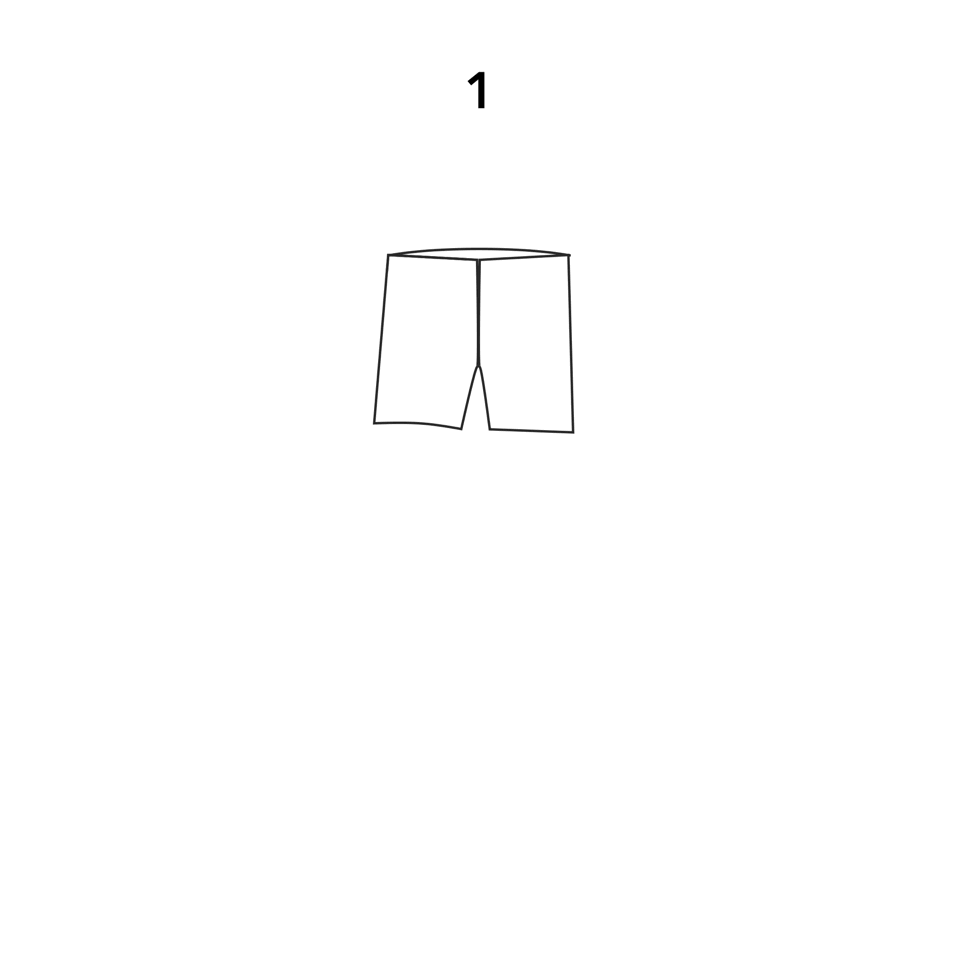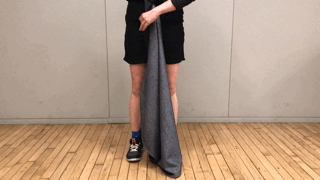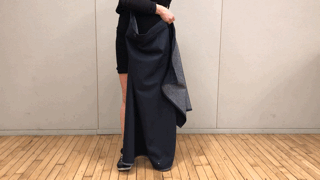DESIGN SUMMARY
Open Style Lab is a non-profit organization that focuses on creating functional yet stylish wearable solutions with and for people with disabilities. In Fall 2018 at Parsons School of Design, we created a transformative pant for our client Rachel Handler, who has a prosthetic leg.
DEFINE PROCESS
Introduction

Rachel Handler is a 30-year-old-woman who has lost her left leg in a car accident six years ago. She was able to salvage her knee (BKA), which increases her ability to maneuver her leg and currently has a below the knee prosthetic leg. As a theatre and movie actress and as a singer, Rachel has become an advocate and motivational speaker for actors with disabilities.
Over the years Rachel has experienced unwanted attention towards her prosthesis which made her sometimes feel uncomfortable. She recalls a moment in the NYC subway, “when a stranger approached me and thanked me for my efforts as a military veteran”. However, there are also moments when she chooses to expose her prosthetic leg so that strangers may see it and ask her about it, showing that there can be an opportunity in adversity. She used to think of her prosthesis as ‘the torture device’ because it was extremely painful, but now she says there’s no better feeling than looking down at her own two feet and taking a step. Either a step towards the fridge, or a step onto the stage.
Interview & Moodboard

We interviewed Rachel at her apartment and experienced her personal style and her "hacks" for her daily life. Wearing a prosthetic leg is generally uncomfortable, especially when wearing it for too long. Whenever possible, Rachel would like to take her prosthetic leg off. Unfortunately, most pants, such as regular denim jeans, don’t offer this possibility without taking the entire pants off, requiring even more effort. Based on her past experience, she prefers not to reveal her prosthetic leg in public since strangers usually react to it. However, when on stage, she would like to show off her beautiful prosthetic leg.
The interview and moodboard helped us figure out our design requirement for her:
-
CONFIDENCE
-
MODIFYING
-
STIGMA
-
PROSTHESIS
-
COMFORT
Journey Map
We draw a journey map to describe Rachel’s daily routine. It illustrates the whole process she goes to an audition. This map helps us to find out the pain point on her way to an audition and guides us to design the “pants” for her.

Instead of solely asking questions, asking users to finish a specific task and observe the process is helpful for designers to find out pain points.
We asked Rachel to show us how she normally prepares for auditions. We saw her starting to pack her bag with an extra pair of shoes. She mainly wears sneakers and yoga pants and will change to something formal when needed. Subsequently, we asked her how she changes her shoes after she arrives at auditions. She, therefore, demonstrated sitting down and taking off the shoes. Sometimes she would need to take off the prosthetic leg, put the shoe on and then put the leg back. After observing the series of actions she performed to get dressed up, we quickly found out changing clothing is a frequent activity, time-consuming and also takes her a lot of effort.
Design Statement
Our goal is to create a garment that can be easily reconfigured to either hide or show a part of the body, as well as making moving around the city easy and comfortable.
Solution
After discussion in sketch reviews and letting Rachel interact with the prototypes and fit them, telling us “I can already think of so many occasions I could wear those pants”, we decided to develop the idea of a reconfigurable garment further as the ‘swapping’ pant

The pants are created from one large piece of fabric that should be placed between the two legs and can be wrapped like the number eight around the body, either one way or the other. As the lower end of the pants are cut in such a way that it exposes only one leg, it allows wearers to show a specific lower leg while hiding the other lower leg. After the first fitting, Rachel’s right dimensions were measured and immediate feedback from Rachel was written down to create subsequent prototypes.
User testing & Iteration
After finishing prototype 2, we did a user test at Union Square to find out our problems and test if this product is universal.


A challenge we encountered was that putting the garment on did not feel intuitive and was not easy to do on ones one. We, therefore, iterated a couple of alternative configurations of the pants. These alternative options all require less interaction compared to the first few prototypes and are simpler in use. Creating straps onto the pants (prototype 2) and matching holes, makes users more aware of how the garment should be fixed together. Fixing the flaps onto a dress (prototype 3) or onto hidden pants (prototype 4) allows the wearer to pull it on just as easily as regular garments, and the fixed flaps can subsequently be swapped in the right direction without being afraid to drop them on the ground on fixing them incorrectly.


Final Product


The sketch demonstrates the evolution of the reconfigurable pants, incorporating the feedback and need to create a more intuitive pulling on method. Prototype 5, which has a small undergarment incorporated into the pants, was chosen as the most easy to use alteration and was therefore used in the final product.


The fabric we used for the final prototype is Wool Denim (manufactured by American Woolen), which uses exactly the same cotton warp yarn as traditional denim, but replaces some of the weft yarns with machine washable wool. It is made out of 51% US wool, 32% US Cotton and 17% recycled Nylon. This fabric has all the beneficial properties that comes with woolen garments; naturally flame retardant, water-resistant, a good insulator, and it absorbs water without feeling wet (Thompson, 2015). These properties are a perfect fit with the demands of Rachel body and career; flexible material that breathes, allows sweating while remaining dry and has a formal look.
DESIGN PROCESS





